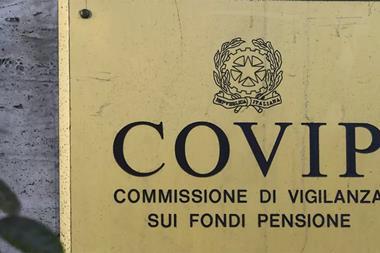The far-right government in Italy is facing growing demands from pension funds and associations to cut taxes on returns of invested assets, while under pressure to find solutions to avoid a return to the stringent requirements of the Fornero law at the end of the year, moving forward with reforms.
Enpam, the doctors’ scheme and the largest in the country, has signed commitments for €750m in private debt, including €489m yet to be deployed, with an exposure to Italy of about 20%.
“[We have] a strong domestic bias. Because of our considerable commitment to support the Italian economy, we hope that the government will continue and expands a policy of tax breaks,” Enpam president Alberto Oliveti told IPE.
The decision to cut taxes paid on returns to zero would bring benefits to pension funds, given the fact that in Italy the ETT model – which sees an exemption of contributions, taxation on accrued interest, and taxation on benefits’ payment (contribution + accrued income) – applies to first pillar pensions.
This is an exception among European countries, with almost all European countries following the EET model – exempt contributions, exempt accrued interest, and taxed benefits’ payment – Oliveti added, this time speaking as the president of Adepp, the Italian association of private pension funds.
“However, we know that now in Italy it is difficult to ease the tax burden on pension funds, and for this reason we ask for selective tax exemptions,” he said.
A mechanism of selective taxation has already partially been in place during the COVID-19 pandemic in Italy, when the government returned some of the taxes paid to the Casse di Previdenza, that were able in turn to distribute them in the form of extra aid to members.
“This mechanism can be used to encourage first pillar Casse di Previdenza to carry out projects that are particularly important, or to encourage investments in certain sectors,” Oliveti added.
Sergio Corbello, the president of Assoprevidenza, the association for the complementary pensions sector, told IPE that is necessary to increase the ceiling for tax-deductible contributions, for many years now at €5.164, getting rid of the “absurd taxation” on the returns annually achieved by pension funds.
“It would also be beneficial to introduce forms of incentives in favour of young people, meaning those in their thirties. As Assoprevidenza we have been making proposals [on the matter[ for some time now, and we will propose again to the new cabinet,” he added.
The new government will also have to face the long-standing issues relating to cutting red tape and designing a clear legislative framework for pension funds.
Institutional investors such as Inarcassa, with assets of €12.7bn, can operate quickly in Italy and internationally, without ending up in bureaucratic jams, under solid and clear rules.
“We expect from the new government that the double tax levy on pension funds will finally be reduced, because a tax of 26% on financial returns effectively denies the possibility of using more resources in favour of the welfare of professionals,” Giuseppe Santoro, the fund’s president, told IPE.
Inarcassa is ready to cooperate with the new government, considering solid rules, transparency and fairness in terms of governance, sound and prudent investments with appropriate criteria for risk and returns as priorities.
“We must be supported in our autonomy and not opposed or downsized, as has been the case with the regulatory interventions in the last 30 years. We are long-term investors and, as such, we cannot act under temporary measures,” Santoro added.
“We must be supported in our autonomy and not opposed or downsized, as has been the case with the regulatory interventions in the last 30 years”
Giuseppe Santoro, president of Inarcassa
Adepp is in favour not only of reaffirming the autonomy of the Casse di Previdenza, but also to improve efficiency of supervision and control mechanisms.
“Now there are too many mechanisms of supervision and control, focusing mostly on verifying individual deeds and individual transactions instead of being oriented towards verifying the efficiency and the achievement of objectives,” Oliveti said.
Moreover, requirements for financial sustainability must be reviewed, as the technical financial statements of the Casse di Previdenza are assessed over a 50-year horizon. Oliveti added: “These criteria, which include the obligation to have huge reserves, even in times of global crisis, need to be reviewed, also because in Italy the Casse di Previdenza finance their members, replacing the state.”
Second pillar pensions should then be encouraged. “Finally, we ask to defend the work of our taxpaying professionals with a law that guarantees them fair compensation and timeliness in payments,” he added.
Discussions on reform restart
Earlier this month the Minister of Labour and Social Affairs met with unions to restart discussing changes to the pension system to avoid a return to the Fornero law, after the so-called quota 102 expires at the end of the year, as negotiations on pension reform stalled under the government of Mario Draghi.
“The [new] government will try first to solve, with temporary measures and in the short-term, quota 102, introduced after quota 100, because without changes the Fornero law, with its stringent requirements, would apply again from 2023. The government could extend quota 102 to 2023, or extend ‘Opzione Donna’ that has not been successful, and ‘APE sociale’,” said Claudio Pinna, partner at Aon in Italy.
Quota 102 allows an employee to retire at 64 years of age with 38 years of contributions, replacing quota 100 (retirement at 62 years and 38 years of contributions), introduced for a period of three years, from 2019 to 2021.
The so-called ‘Opzione Donna’ allows women to retire early, calculating pensions based on contributions, and ‘APE sociale’ is a benefit paid by the Istituto Nazionale della Previdenza Sociale (INPS) to for example unemployed, or workers who care for relatives with a disability, or employed in strenuous jobs.

Brothers of Italy (Fratelli d’Italia), the political party of prime minister Giorgia Meloni, has floated the idea of ‘Option Uomo’ to introduce early options for retirement, at 58-59 years of age with 35 years of contributions and a cut of up to 30% of the pension benefits, according to reports.
For Pinna, the measures floated so far by the government coalition, like quota 41 by the League (Lega), which gives the possibility to retire with 41 years of contributions regardless of age, or flexible retirement age proposed by the Brothers of Italy (Fratelli d’Italia) in the electoral programme, coupled with increases of pension benefits paid, can have an impact on Italy’s public finances.
“The Fornero law had stabilised public finances and changes to the pension system can put this stability at risk.” he said.
This week the minister of economy and finance Giancarlo Giorgetti signed the decree increasing pension by 7.3% from January, in line with inflation.
The government expects public expenditure for pensions to grow by €0.6bn in 2023, by about €7.1bn in 2024, and by €5.6bn in 2025, according to an update put forward by the current government earlier this month, revising a previous version approved by the government of Mario Draghi in September.
According to a report in the Corriere della Sera newspaper, Giorgetti is working on a system of flexible retirement age, giving employees the option to retire earlier than 67 years old, the current statutory retirement age, which could entail cutting pensions, or deciding to continue working receiving a wage increase.
Looking beyond temporary measures
Long-term inflation, possible recession next year, the war in Ukraine and the wider geopolitical context create problems for pension funds’ investment strategies.
“I don’t think that this government will increase the deficit a lot, if it will increase the deficit it will be in line with EU rules,” Pinna said.
Inarcassa expects the government to continue following the path of the previous cabinet in terms of management and control of public finances, given the agreements at EU level to receive funds for the National Recovery and Resilience Plan (Piano Nazionale di Ripresa e Resilienza, PNRR), and the mechanisms to manage volatility on spreads of peripheral countries announced by the European Central Bank.
It expects the spread on the 10-year yield between Italian government securities (BTPs) and German ‘Bunds’ on average around 250bps, despite volatility, which in absolute terms means yields at maturity between 4.5% and 5% gross.
“We approved the new strategic asset allocation for 2023, increasing the allocation to bonds as a consequence of the significant increase in yields, especially the medium/long component of the curve. As part of this change, a further significant part of our assets will be allocated to Italian government bonds, especially those indexed to inflation,” Santoro said.
The main problem, however, remains the stability of the pension system in the long-term. The idea of introducing a period of silent consent (silenzio assenso) is a positive measure to support the second pillar pension system in Italy, but Pinna suggested a further step: introducing automatic enrolment in pension funds.
“Employees should auto-enrol in pension funds, giving them the option to opt-out but only after consulting on the consequences of opting-out,” he said.
Oliveti said the public pension sector should follow the example of the Casse di Previdenza, and the three principles on flexible retirement age, proportionality and gradualness.
“It is necessary to encourage a flexible retirement age, supporting young people at the beginning, and allowing the elderly to relieve themselves in the last years of activity,” he said.
Proportionality means that there must be consistency between the contributions paid and the amount of pension received at retirement age – in the private pension sector this is already the case – while gradualness means making reforms without sudden changes, for example suddenly increase the retirement age by a few years.
The latest digital edition of IPE’s magazine is now available


























No comments yet